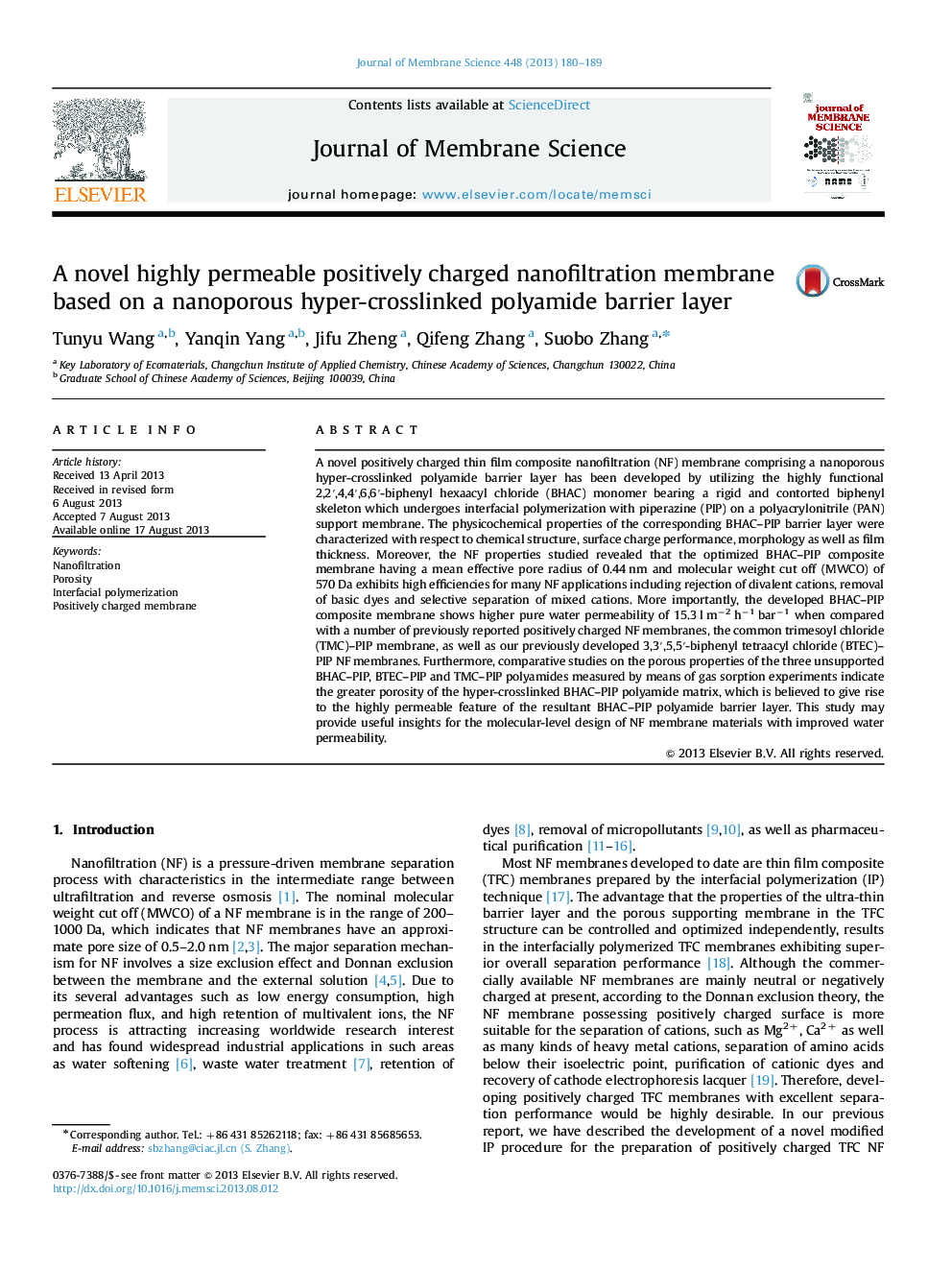| Article ID | Journal | Published Year | Pages | File Type |
|---|---|---|---|---|
| 634131 | Journal of Membrane Science | 2013 | 10 Pages |
Abstract
A novel positively charged thin film composite nanofiltration (NF) membrane comprising a nanoporous hyper-crosslinked polyamide barrier layer has been developed by utilizing the highly functional 2,2â²,4,4â²,6,6â²-biphenyl hexaacyl chloride (BHAC) monomer bearing a rigid and contorted biphenyl skeleton which undergoes interfacial polymerization with piperazine (PIP) on a polyacrylonitrile (PAN) support membrane. The physicochemical properties of the corresponding BHAC-PIP barrier layer were characterized with respect to chemical structure, surface charge performance, morphology as well as film thickness. Moreover, the NF properties studied revealed that the optimized BHAC-PIP composite membrane having a mean effective pore radius of 0.44 nm and molecular weight cut off (MWCO) of 570 Da exhibits high efficiencies for many NF applications including rejection of divalent cations, removal of basic dyes and selective separation of mixed cations. More importantly, the developed BHAC-PIP composite membrane shows higher pure water permeability of 15.3 l mâ2 hâ1 barâ1 when compared with a number of previously reported positively charged NF membranes, the common trimesoyl chloride (TMC)-PIP membrane, as well as our previously developed 3,3â²,5,5â²-biphenyl tetraacyl chloride (BTEC)-PIP NF membranes. Furthermore, comparative studies on the porous properties of the three unsupported BHAC-PIP, BTEC-PIP and TMC-PIP polyamides measured by means of gas sorption experiments indicate the greater porosity of the hyper-crosslinked BHAC-PIP polyamide matrix, which is believed to give rise to the highly permeable feature of the resultant BHAC-PIP polyamide barrier layer. This study may provide useful insights for the molecular-level design of NF membrane materials with improved water permeability.
Related Topics
Physical Sciences and Engineering
Chemical Engineering
Filtration and Separation
Authors
Tunyu Wang, Yanqin Yang, Jifu Zheng, Qifeng Zhang, Suobo Zhang,
